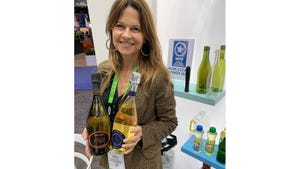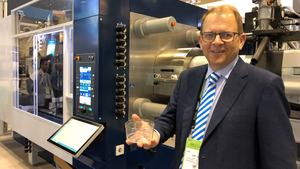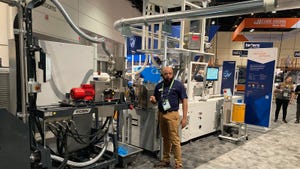VEC’s process extended from boats to windmill blades
February 19, 2009

The U.S. Army National Guard has placed a $1.5 million test order for VEC's composite containers.
VEC Technology LLC, which is 92% owned by boat builder Genmar Holdings Inc. (Minneapolis, MN), announced its patented composites processing technology, already well-established in the boat-building industry, has found interest beyond the nautical world, with the U.S. Army National Guard (USANG) placing a $1.5 million initial test order for containers made of composite walls. VEC began delivering the first VEC containers contracted by the USANG in mid-February.VEC’s process originally was developed for processing of hulls for recreational boats, and it’s seen use making some 75,000 of these, according to Genmar. A boat made via the process took center stage at the massive GE Plastics’ (now Sabic Innovative Plastics) stand at the NPE trade show in 2003. Click here for MPW’s report on that boat and much more on the VEC process.
According to Irwin Jacobs, Genmar’s CEO, the company is also developing the process so that it can be used to form blades for windmills. Jacobs said, “Over the past year at our VEC Technology Center in Greenville, PA, we believe VEC has developed the world’s most unique and highly-technological process for manufacturing composite wind blades for the wind energy industry. It is well known that there have been and continues to be severe cracking and non-performance problems among many of the existing large fiberglass wind energy blades that have been installed throughout several of the existing wind power farms in North America. The majority of the problems with the existing wind energy blades have had to do with the numerous inconsistencies in the traditional fiberglass blade manufacturing technique. Most of the fiberglass wind blades presently being manufactured throughout the world are manufactured through the older traditional process that frequently causes a lack of consistently built blades for precision repeatable performance.” VEC’s computer-controlled process could be the answer to these problems, he added, and claimed VEC-manufactured blades may also produce more energy than existing wind blades due to VEC’s satin finish. —[email protected]
About the Author(s)
You May Also Like


